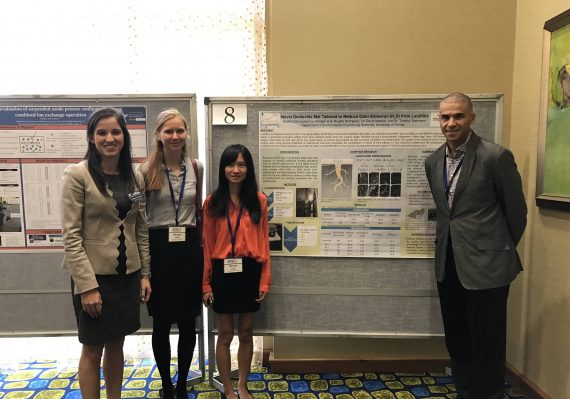The innovation consists of a geotextile mat incorporated with iron oxide-impregnated activated carbon (FeAC) tailored to remove hydrogen sulfide (H2S) from municipal solid waste and construction and demolition debris landfills. Landfills are designed to manage waste, prevent contamination between the waste and natural environment, and provide a cost-effective disposal option, however they produce various toxic gases when bacteria break down the organic waste. Activated carbon is a well-developed sorbent material that has been effectively applied for the adsorption of odorous compounds in many industries. The material is characterized by high surface area, large complex pore volume, and high reactivity. For landfill applications, AC is a capable sorbent to address malodorous H2S but also promote oxidation of H2S to elemental sulfur, which also contributes to elimination of the odor. Removal effectiveness can be further enhanced by developing the porosity and catalytic activity of AC. Iron oxide sorbents have been applied for H2S removal from syngas applications and have shown good removal rates with low cost. H2S reacts with iron oxide in the presence of humidity to form sulfur iron species at ambient temperatures. Combining AC and iron oxides should yield a high-capacity sorbent with strong H2S removal capabilities that comes from a synergy of the two materials when applied for odor control at landfills. The high capacity will be required because other odor-causing pollutants may be present which require removal and will thus occupy adsorption sites. The goals of this research are to create a geotextile mat containing iron-impregnated activated carbon (FeAC) to ultimately remove H2S.
